Tag: Workouts
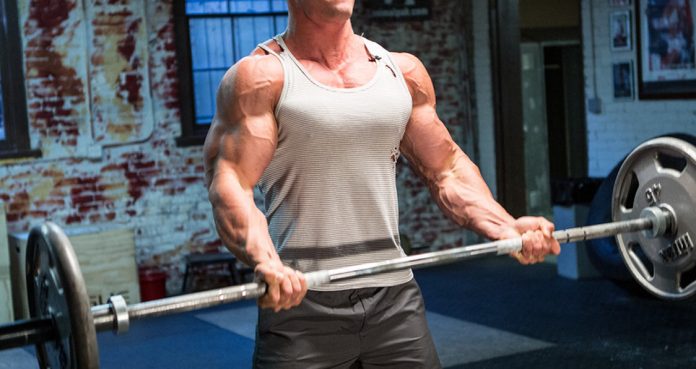
Get Bigger Arms With This Simple Workout
Sleeve-Splitting Arm Workout
The idea of having big arms push many of us to get a gym membership. Huge arms have been associated with machoism for a long time. Ask a kid to flex his muscles, and he’ll most probably hit you with a front double bicep.
You need to pay equal attention to your biceps and triceps. You can’t go crazy with your bicep workouts while overlooking your triceps development. Muscle symmetry is important for strength and aesthetic purposes.
Some people hurt their gains by training their arms every single day. Training your arms every day won’t get you bigger arms. Doing this leads to overtraining since your muscles need time to recover and grow after a workout.
Many people train their biceps before their triceps on the arms day. This can lead to weak triceps since you might be exhausted by the time you start your triceps workout.
This can happen for any muscle you train second on a multi-muscle training day. To combat this in your arm workouts, you will be doing antagonistic supersets. In this advanced training technique, you superset different muscle groups in a single set. For, e.g., – you will be super-setting your biceps with your triceps. Follow this workout to get bigger arms.
Superset 1
Standing Cable Bicep Curls – 3 Sets 15 Reps
You would be starting with a cable exercise to pre-exhaust your muscles. This will help you get the same pump later in your workout while using relatively light weights. Use a straight bar attachment for this exercise.
Overhead Rope Cable Tricep Extension – 3 Sets 15 Reps
Your triceps consist of three heads; medial, long and lateral. You need to train all three to ensure an overall development. The overhead rope cable extensions target your long head. Using cables will help you maintain tensions on your triceps throughout the movement.
Superset 2
Dumbbell Curls – 3 Sets 15 Reps
Dumbbell curls is an incredibly effective exercise to target your biceps. In this exercise, rotate your hands outwards at the top of the movement. This will help in building the peak in your pythons.
Close Grip Bench Press – 3 Sets 15 Reps
Doing a compound exercise (multiple joints) can help build size and strength in your target muscle group. Close grip bench press helps with the overall development of your triceps. Make sure you have a complete range of motion while performing this exercise.
Superset 3
Concentration Curls – 3 Sets 15 Reps
It is always more effective to end your bicep workouts with an isolation exercise. Concentration curls were one of Arnold’s favorite exercise. This exercise helped him turn his biceps into mountain peaks. You need to maintain a mind-muscle connection throughout this exercise. Going through the motion won’t get you anywhere.
Tricep Dips – 3 Sets 15 Reps
Doing dips at the end of your workout can test what you’re made of. If body weight dips are too easy for you, feel free to add resistance bands or resistance using weights. Maintain a full range of motion and squeeze your triceps at the top of the movement to get the most of this exercise.
Which is your favorite triceps exercise? Let us know in the comments below. Also, be sure to follow Generation Iron on Facebook and Twitter.
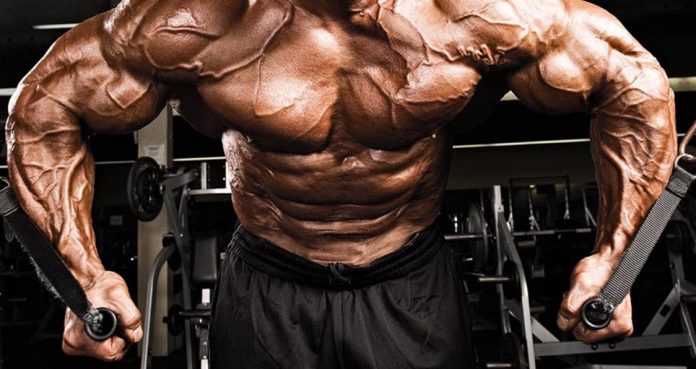
The 5 Best Machines For Getting Shredded
The 5 Best Machines For Getting Shredded
With the evolution of bodybuilding, researchers have come up with ways to speed up the process of gaining muscle mass with the help of better nutrition and advanced training techniques. Over the years machines used in the gyms have gotten better.
Using machines can help you achieve your desired results while preventing injuries. Many bodybuilders use machines while preparing for competitions to avoid injuries. Machines are great for beginners as they limit the range of motion and avoids recruiting muscle stabilizers.
These are the 5 Best Machines
1. Cable Crossover Machine
Cable crossover station is one of the most important equipment in a gym. You can do a variety of exercises targeting different muscle groups on this machine. If your gym doesn’t have a cable crossover machine, you should start looking for a new gym.
Using cables has a different effect on your muscles as compared to using free weights. You have constant tension on your muscles during the eccentric and concentric movement while using the cables.
2. Smith Machine
Smith machine is another gym essential. It is a great equipment for people who can’t perform exercises like the bench press or squats due to problems like joint pains. The smith machine avoids recruiting secondary muscle groups as your path of motion is fixed.
The smith machine is great at developing your lagging muscles as it limits your movement. Let us say you have a overdeveloped glutes and weak quads. You can eliminate your glute recruitment and focus entirely on your quads by placing your feet in front of you.
3. Pec Fly Machine
The pec deck machine is nearly as effective as the bench press in activating the pectoralis major. Using the pec fly machine will help you in maintaining constant tension on your inner chest. This machine is a must for people who want striations and separation in their chest.
You can also work your rear delts on the pec fly machine. Sit with your chest against the pad to target your rear deltoids. Rear delts are a weak muscle group for most people. They make it even worse by not training them often.
4. Leg Press
You will hardly see a gym without a leg press machine. The leg press machine can help you in building muscle mass and strength in your lower body. The leg press also happens to be one of the most abused machines in a gym.
Many people load the machine with more weight than they can handle. You will see the best results while using the leg press machine by following a full range of motion. Excessive weight puts stress on your lower back and can result in an injury if you fail a rep.
5. Hammer Strength
Hammer strength is one the best equipment for training your chest. The hammer strength is incredibly effective for people who can’t bench press for some reason. Pros use this machine while preparing for a contest or during muscle rehab.
You target the same muscles while using the hammer strength as you do during the bench press. As you are in a leveraged position, you can use heavier weights on the hammer strength as compared to the flat bench press.
Which is your favorite machine?
Let us know in the comments below. Also, be sure to follow Generation Iron on Facebook and Twitter.
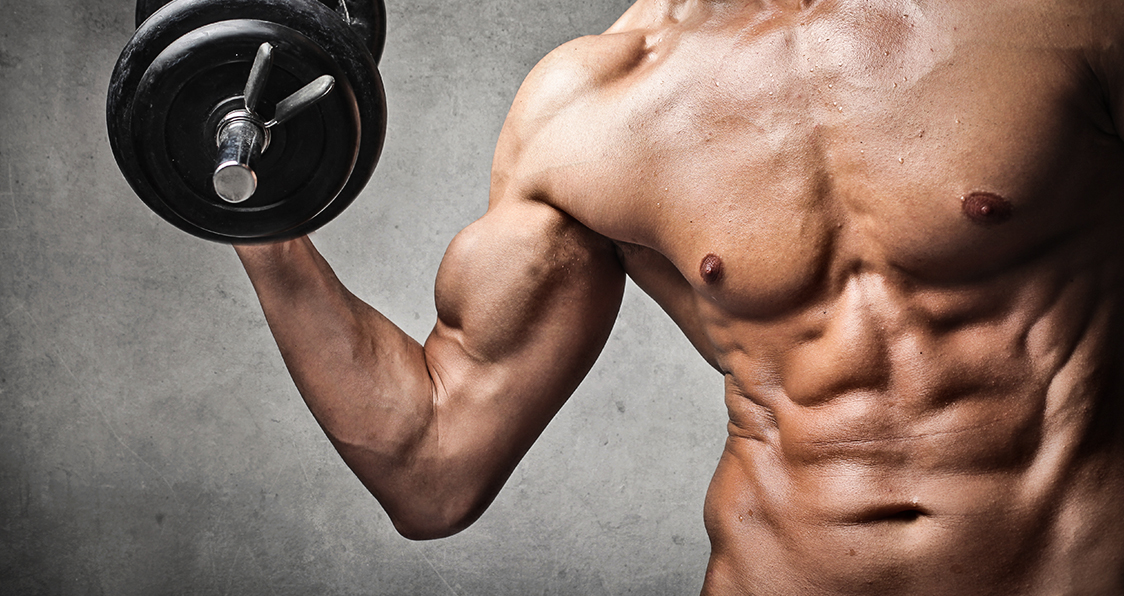
The Secret To Overload Training
Time to push your training over the edge and into the next level.
When your typical training routine just isn’t cutting it, you can always count on Generation Iron to bring you something to freshen things up a bit. Overload training is a great method to get some gains without just completing the typical three sets of ten reps basic program. Overload training is great for building strength and putting on mass as well. Overload training forces your body to get used to the increased effort and stress you put your body through in order to increase hypertrophy. But how exactly do you go about overload training? We’ve got you covered.
1. Form and ROM
First thing’s first. When it comes to overload training you have to make sure your technique is in tip top form. Things like form and rang of motion don’t really sound sexy, but neither do the words slipped disk. Injury is the enemy of gains and if you want to to make some you’re going to have to get your technique down when it comes to lifting. Once you’ve perfected the mechanics of a lift then practicing to obtain full range of motion will be the next priority. This will enable you to attack a muscle group from all different angles and activate all the muscle fibers you’re looking to attack.
2. Increase Volume
Once your form is clean then the logical next step is to increase the amount of reps and/or sets. By now your body has gotten used to the weight that you’ve been hauling. The pump that you used to experience has slowly begun to fade away and you’re feeling like you’ll never experience it again. Don’t put down those weights quite yet. Up the volume on your lifts and you’ll find yourself not only experiencing hypertrophy, but building strength and muscle endurance as well.
3. Increase Weight
You can’t just rely on increasing your reps to get bigger. There’s going to come a time when you’ll have to up the weight you’re lifting. But this doesn’t mean you should go from 75 lbs dumbbells to 200 lbs. Instead you’ll be lifting a higher amount of weight and decreasing the volume. Say you’re pushing 225 lbs on the bench for 10 reps, increase the weight to 250 lbs and perform 8 reps. Then up it to 275 lbs and 6 reps and so on until you reach your one rep max.
4. Intensity
It’s gotta be said. If you want to see some major changes in your physique then you’re going to have to train hard. The intensity of your workout has a part to play in the amount of muscle you’ll pack on from training. This is where the form, the increased volume, and increased weight comes into play. Combining all these factors as well as performing the same amount of reps/sets in a shorter time or a greater amount of reps in the same amount of time for an average lifting regimen will in affect make for a more intense workout.
5. Frequency
The amount of time you work a muscle group per week is also important to getting the full benefit from overload training. If you’re one of those hit the gym three times a week kind of guys then you’re going to have to change things up for overload training. Get in the gym five days a week so that you’re constantly training a muscle group on each day of the week. There’s nothing better than consistency when it comes to training.
What are your thoughts on overload training? Let us know in the comments below and be sure to follow Generation Iron on Facebook and Twitter.
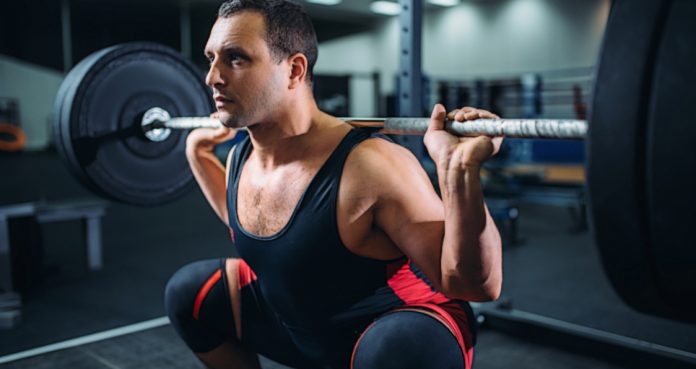
The Absolute Best Leg Exercises For Men
7 Workouts For Building Mass in the Glutes, Hamstrings and Quads
Leg-day tends to divide bodybuilders. There are those who really enjoy a hard leg-based workout and those who’d rather replace leg day with chest day. With so many methods and pieces of equipment at our disposal, it can be challenging to know where to start.
The methods employed and the exercises selected should be dictated by the primary goal that has been set. While it’s true that there will be similar components with the majority of leg workouts, each one should be tailored to a specific goal.
For example, understandably squats tend to be a part of the majority of leg workouts – however, there are a number of squat variations which can be used to focus on a specific muscle group. Additionally, there are a number of advanced training techniques – such as supersets and pre-exhaust – which can be utilized in order to bring about specific changes to the muscle.
To highlight the importance of specificity in training, let’s take an individual who is looking to start bodybuilding. It would not be sensible for them to immediately dive in to heavy squats, leg presses, and deadlifts, considering their lack of experience and readiness. Instead, they must first lay a solid foundation by establishing efficient movement. Only once this has been done, can they consider gradually moving on to heavier, more complex exercises.
7 Leg Workouts For Every Type of Goal
Taking this into account, the following 7 workouts all have a different focus. Each workout has been carefully designed so that it can easily be incorporated into a typical bodybuilding “split” program. Providing consistency and intensity are prevalent in one’s training, the muscles of the legs will be forced to adapt and improve in strength and size.
1) Building Foundations
The first workout of the 7 is perfect for the beginner or novice. There is no denying that the squat is one of the best leg development exercises that can be performed. However, being able to squat with safety and efficiency does not happen overnight – practice is required.
When learning to squat, or when learning any new skill, the movements may initially feel strange, uncoordinated and unstable. This comes down to the nervous systems control over the body. When learning a new skill, it takes time and repetition in order to establish neural pathways in the brain and allow the body to “understand” the movements required (1).
The best example of this is a toddler learning to walk. Initially, they are unstable and can’t manage more than a few steps before falling to the floor. However, with practice, these neural pathways become established to the point that they can efficiently walk and falling over is no longer an issue.
Therefore, with this workout, the goal is to allow the user to get to grips with the movements required for the squat. Gradually, as efficiency and confidence improve, the load being lifted can be increased to maximize changes in leg strength.
The rest of the workout is heavily machine based, as machine-based exercises do not require as great a degree of coordination and understanding of movement as the squat. Incorporating weight machines at this stage is recommended as they will provide a controlled introduction to weight training and effectively load the muscles without running the risk of sustaining injury.
Exercise
Sets x Reps
Goblet Squat
4 x 10 – 12
Leg Press
3 x 10 – 12
Leg Extensions
3 x 10 – 12
Leg Curls
3 x 10 – 12
Calf Raises
3 x 15 – 12
2) Mass Building
When it comes to building size, it is important that we focus first on “big” compound exercises which target the greatest number of muscles. These exercises place a large stress on the muscles which forces them to adapt in size. It would make sense to start with the exercises that require the largest degree of exertion and energy as these are the exercises that will have the most profound effect on developing size.
Additionally, it is imperative that the overall training volume is relatively high and that we train to muscle failure often as a studies have indicated that these are important factors when it comes to packing on size (2).
Finally, it may be sensible to change the dynamic of specific exercises in order to target the muscles in a slightly different way. A good example that may be worth considering is altering foot placement with the leg press or squat. A slightly wider stance will take the emphasis from the quadriceps and shift it onto the glutes and hamstrings, whereas a narrower stance will accentuate the quads.
This workout involves a number of free weight and resistance machine exercises that target all 4 muscle groups of the legs – the glutes, quads, hamstrings and calves. Additionally, it uses an advanced training method known as the reverse pyramid which simply involves varying the number of reps and load lifted per set.
The reverse pyramid is beneficial as it accommodates for muscular fatigue and allows the user to continually hit maximal fatigue with each and every set. As the rep range increases, look to decrease the load that is being lifted and look to reach muscular failure with each set.
Exercise
Sets x Reps
Barbell Squat
4 x 6, 8, 10, 12
Leg Press
4 x 8, 10, 10, 12
Dumbbell Walking Lunges
3 x 10, 12, 14
Leg Extensions
3 x 10 – 12
Lying Leg Curls
3 x 8, 10, 12
Calf Raises
4 x 10, 10, 12, 12
3) Improving Definition
For many, the belief is that high reps and light weight is optimal for building muscle definition. However, research does not seem to support this theory. Application of heavy loads are equally as effective at maintaining muscle size and developing muscle tone.
Ultimately, the strength training method used will be less significant than one’s nutrition when it comes to enhancing leanness. If leanness is the goal, the primary focus should be on nutrition to bring about a reduction in overall stored body fat. Without a thick layer of body fat over the top of the muscles, they will immediately look more defined and lean. This can only be done by maintaining a calorie deficit over a prolonged period.
Strength training is super important in a calorie deficit. Without appropriate training, there may be a reduction in muscle size along with a reduction in body fat, however, regular strength training can prevent muscle atrophy (3).
The workout involves a multitude of compound exercises, straight sets and supersets to target all muscle groups of the legs. Supersets involve completing one exercise straight into a second exercise (with no rest); this method can be used to effectively increase the overall volume of one’s training and therefore assist in maintaining muscle size.
Exercise
Sets x Reps
Smith Machine Squat
4 x 8 – 10
Leg Press (Superset 1)
3 x 10 – 12
Goblet Squat (Superset 1)
3 x 10 – 12
Barbell Reverse Lunge (Superset 2)
3 x 10 – 12
Leg Extensions (Superset 2)
3 x 12 – 15
Lying Leg Curls (Superset 3)
4 x 10 – 12
Donkey Calf Raises (Superset 3)
4 x 12 – 15
4) Glute Building
The following 3 workouts will target a specific muscle group. For many bodybuilders, they may find that a specific muscle group is perhaps lagging behind the others and therefore requires additional attention. Selecting the correct exercises is imperative when looking to target a specific muscle group as some exercises are undoubtedly superior than others.
With this in mind, each of the following exercises has been carefully selected based on the fact that they activate the muscles of the glutes to a large degree. The workout structure is similar to the mass gaining workout and uses a reverse pyramid to encourage muscular fatigue with each set.
Exercise
Sets x Reps
Wide Stance Barbell Squat
4 x 6, 8, 10, 12
Leg Press
3 x 8, 10, 12
Barbell Reverse Lunge
3 x 10 -12
Unilateral Cable Kickback
3 x 8, 10, 12
Romanian Deadlift
4 x 8, 8, 12, 12
5) Hamstring Building
Unfortunately, for so many individuals, the hamstrings are neglected as many of the movements and exercises that we regularly perform are quad and glute dominant. This can lead to an overdevelopment of the quads and glutes while simultaneously underdeveloping the hamstrings. Failing to develop the hamstrings will not only hamper bodybuilding progress but can actually increase the risk of injury.
Once again, the exercises that have been selected place the greatest demand on the hamstrings and will therefore accelerate the rate of hamstring development. The romanian deadlift, for example, has been found to be one of the best exercises for activating the hamstrings and increasing overall hamstring strength (4).
Following a similar structure as the glute-specific workout, this workout uses reverse pyramid sets to increase volume, intensity and accelerate the rate of muscle hypertrophy.
Exercise
Sets x Reps
Romanian Deadlift
4 x 6, 8, 10, 12
Hamstring Bridge
3 x 8, 10, 12
Glute Ham Raises
3 x 8, 10, 12
Leg Curl (Dropset)
3 x 10, 10, 12
6) Quad Building
The final muscle-specific workout, is the quad building workout which places a greater emphasis on the quads through the use of compound exercises, such as the front squat, and isolation exercises, such as leg extensions.
Using a combination of compound (multijoint) and isolation (single joint) exercises is recommended for all muscle-targeted workouts. Compounds contribute towards making substantial improvements in terms of leg strength and size whereas the isolation exercises will place a greater load on a specific muscle (in this case, the quads), to promote growth further and assist in improving compound lift performance.
The quad workout follows exactly the same structure as the hamstring specific workout. This is because, ideally, these muscles should develop at a similar rate in terms of both strength and size. Equal development is important when we consider that these two muscles work together to control and generate movement around the knee and hip. Having one muscle group significantly stronger than the other may increase one’s injury risk.
Exercise
Sets x Reps
Barbell Front Squat
4 x 6, 8, 10, 12
Hack Squat
3 x 8, 10, 12
Leg Press
3 x 8, 10, 12
Leg Extensions (Dropset)
3 x 10, 10, 12
7) Plateau Busting
In any bodybuilding journey, there will be times where a plateau is reached. This is simply where strength and size gains have become stagnant. To efficiently move past any plateau, changes need to be made to one’s training in order to introduce a new training stimulus to the body (5). As a result of this new stimulus, the body will react by adapting and improvements in strength and size will recommence.
This workout uses an advanced training method known as pre-exhaust. The purpose of this method is to partially fatigue the muscles through an isolation exercise before moving onto a heavier compound exercise. This method will push the muscles to their limit and as a result, force them to adapt.
Do be aware that with this method, it may be necessary to lower the weight for the compound lifts. This is because the muscles will already be fatigued prior to performing the compound lift and as a result, it may not be possible to lift as heavy as normal.
Exercise
Sets x Reps
Leg Extensions
5 x 8 – 10
Smith Machine Squat
4 x 8, 10, 10, 12
Hack Squat
3 x 10 – 12
Dumbbell Lunges
3 x 10 – 12
Final Word
In order to maximize results and advance towards the set goal, look to perform the chosen workout over a 4-8 week period. After completing this stint, assess progress and consider switching over to another specialized leg workout to continue improving. By doing this, significant changes in leg size and strength will occur, providing that the workouts are performed consistently and with the right intensity.
For more news and updates, follow Generation Iron on Facebook, Twitter, and Instagram.
References:
1- “Neural Centers Responsible for Movement”.
2- “Resistance Training Volume Enhances Muscle Hypertrophy but Not Strength in Trained Men”.
3- “Preserving Healthy Muscle during Weight Loss”.
4- Schmitt, Kayla (September 28, 2017). Electromyographic comparison of the hamstring muscles during various exercises
5- Sports Health. 2010 Nov; 2(6): 509–518. doi: 10.1177/1941738110375910. PMCID: PMC3438871.PMID: 23015982
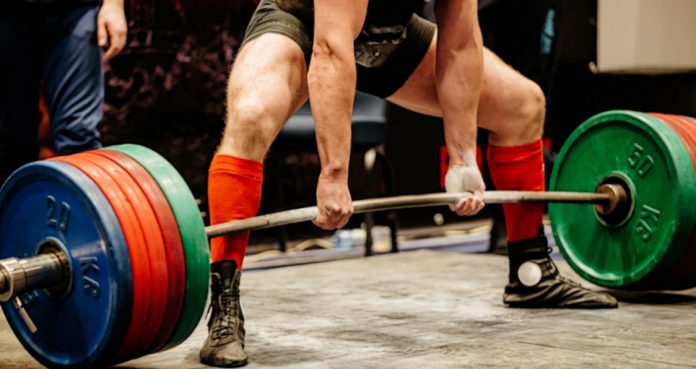
4 Reasons You Should Have Olympic Lifts In Your Bodybuilding Routine
Olympia meets Olympics.
Bodybuilding is all about hypertrophy. Building muscle is the reason for exercise after all and that means working your muscles hard until they experience hypertrophy. This, of course, promotes growth. Because a dedicated bodybuilder is going to want their entire body to be proportionate – that means working multiple muscle groups with a number of different exercises that will ensure the overall package is well defined.
But despite shaping an aesthetic physique bodybuilding does little in the way of increasing your overall strength. As an athlete, a bodybuilder should want to make improvements to more than just their physique. For that reason, adding some Olympic lifts to your routine is a great way both improve your strength as well as gain muscle.
While many people will say that Olympic lifters don’t look all that impressive physically, particularly when compared to a bodybuilder, the fact is that they possess great strength and can in fact build a great amount of muscle depending on how they train. The reason many Olympic lifters don’t have a godly physical appearance is because they’re focused on technique and improving the specific Olympic lifts. Usually they just want to get the bar up by performing either the snatch or the clean and jerk, both movements emphasizing strength, explosion, and speed. Because of this, the time they spend under tension is limited to a few seconds at best. Undergoing hypertrophy means having increased time under tension to really tax the muscle and get them to grow.
Despite that fact, you should definitely try adding the Olympic style training to your routine. But why you ask? Well, here’s a list of reasons on how you’ll see some drastic improvements.
Provides cardiovascular training
The explosive movements you must utilize in order to lift the bar from the ground during your training is much the same as sprinting. The distance of the bar movement while performing the Olympic lifts, several feet from floor to over head, means utilizing more of the body’s core mechanics, the same you’d use if you were running on a track. Compared that to lifting a dumbbell and you’ll see which requires more cardiovascular strength.
It’s a total body workout
Olympic lifts are also a great tool for getting a total body workout. You can’t just perform the snatch and clean and jerk and call it a day. Olympic style training requires you to have good fundamentals in the deadlift and the front and back squats. You’ll be training those lifts along with the Olympics lifts which will ensure your entire body is being worked.
The increased strength and explosion
This should be a no brainer. Having increased strength and explosion in your lifts will easily translate over to improvements in all your lifts. That includes bodybuilding staples like the bench, squat, and the deadlift. Training the Olympic lifts means overall performance gains.
Easy to add to a routine
The movements can easily be added to any of the routines you do in the gym. It can be added at the beginning or the end of your training session. If done correctly they can be great for crashing through a plateau or just generally improving your abilities. Try a light form at the beginning of your workout for a great warm up or at the end to thrash an already taxed body.
Do you have Olympic lifts in your routine? Let us know in the comments and forums. Be sure to follow Generation Iron on Facebook and Twitter.
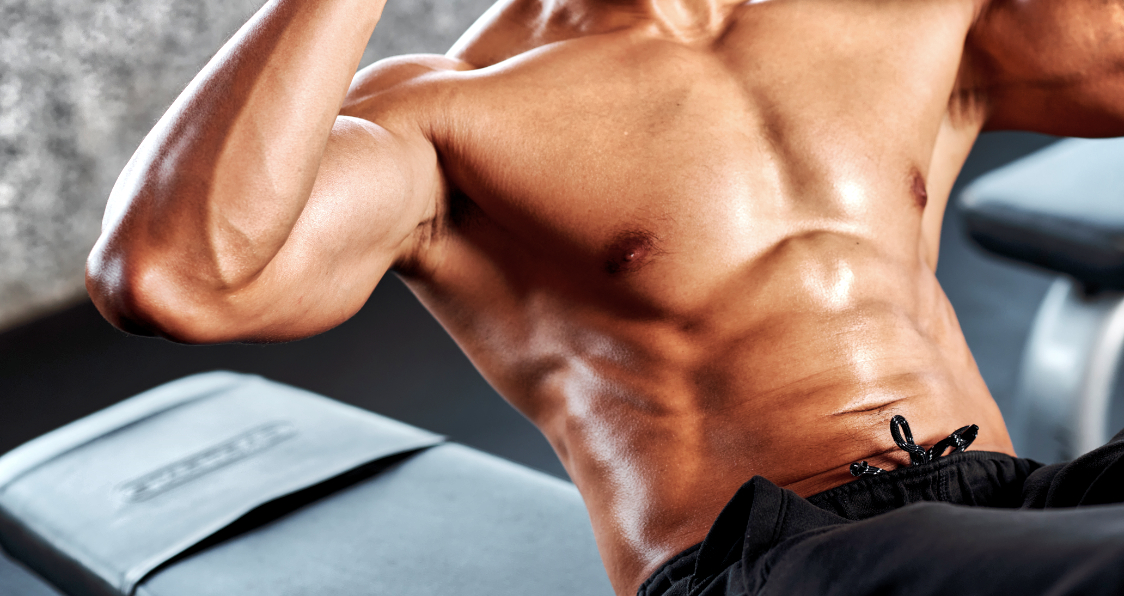
How To Get A Six-Pack (Post Pandemic Edition)
A complete guide to sculpting the perfect six-pack abs
Crafting a six-pack is hard. Anyone who tells you otherwise is lying. We wish getting a six-pack was as easy as grabbing a six-pack of beer from a store. Also, we think the alcoholic beverage companies are playing a practical joke on us. Or do they want it to act like a reminder that a six-pack of beer will never let you have six-pack abs? You be the judge.
The pandemic has been rough, especially for fitness enthusiasts. The mayhem that the coronavirus caused put us in an unexpected situation. Who would have thought we would be locked in our houses for months on end. The lockdown situation didn’t bode well for our bodies either.
While we did see the WFH culture take on a new life last year, it didn’t translate the same way for the fitness scene. The reason behind it is not so hard to figure. People have a motivation to work – money, but the same doesn’t always apply to fitness.
Ways To Build A Six-Pack After The Pandemic
Now that most of us have started training at gyms again, it’s time to create a blueprint for achieving our dream physiques. Washboard abs are a result of optimal training, nutrition, and recovery programs. Falling off in any of these can throw you off track.
Read also: 5 Gym Habits You Should Follow Post COVID
If Cap’n Crunch is the first thing that comes to your mind when someone mentions crunches, you know you have some work to do. In this article, we will help you build a six-pack from scratch. Even if you’re a fitness newbie or an advanced lifter, you’ll take something away today.
1. Diet
Remember: Abs are made in the kitchen and crafted in the gym. You shouldn’t expect to build a chiseled midsection while feasting on burgers every other day. Your first step towards a six-pack should be to get your diet in order.
Your diet plan will vary depending on your current body fat percentage and the excess weight you need to shed. Everyone has abs, but most of us love them so much that we have them protected under a layer of fat.
Switch to a calorie deficit diet – meaning you need to be burning more calories than you’re consuming. Since you were in your house for a big chunk of the year, you could be running a calorie surplus.
How to Design Your Diet Plan:
Use A Calorie Tracking App – Apps like MyFitnessPal and HealthifyMe are great for logging your daily food intake. You should log your meals for at least a week before checking your average daily calorie and macronutrient intake and breakdown.
Find Out How Many Calories You Need – There are many online calculators which will tell how many calories you need to be eating based on your age, height, weight, and gender. Use this calculator to find your daily calorie intake goal and this for the macronutrient goals.
Choose Your Food – Wisely – Some people make designing a diet plan sound harder than it is. After you know how many calories you need to be eating every day, you should begin putting down food items that meet your goals in a planner. The apps mentioned above have an extensive list of food items with different nutrient values. Selecting foods that fit your lifestyle is very crucial. You don’t want to add food items to your list that are too exotic or expensive.
Follow The Diet Plan – Might sound basic, but following the program can be the roughest part of dieting.
2. Training
Most people are never able to build a six-pack because they stick to vanilla ab workouts. If a few crunches and sit-ups are your idea of an ab workout, you shouldn’t even bother starting.
Break down your midriff training into sections. Your workouts should consist of different exercises to train your upper, middle, and lower abs. Oblique training is another overlooked aspect of core training. Follow the workouts mentioned below to take your abdominal to the next level.
Workout 1
Hanging Leg Raises – 3 Sets 20-30 Reps
Cable Crunches – 3 Sets 20-30 Reps
Planks – 3 Sets 1 Minute-Each
Mountain Climbers – 3 Sets 20-30 Reps
Jumping Jacks – 3 Sets 1-Minute Each
Workout 2
Flutter Kicks – 3 Sets 30-40 Reps
Alternating Leg Lowers – 3 Sets 30-40 Reps
Side Planks – 3 Sets 1-Minute Each
Glute Bridge March – 3 Sets 30-40 Reps
High Knee Running – 3 Sets 1-Minute Each
Workout 3
Lying Windshield Wipers – 3 Sets 20-30 Reps
Crunches – 3 Sets 30-40 Reps
Superman Planks – 3 Sets 90-Seconds Each
V-Ups – 3 Sets 30-40 Reps
Burpees – 3 Sets 2-Minutes Each
Workout 4
Russian Twists – 3 Sets 30-40 Reps
Ab Wheel Rollouts – 3 Sets 10-20 Reps
Push-Up Planks – 3 Sets 90-Seconds Each
TRX Mountain Climbers – 3 Sets 30-40 Reps
Squat Jumps – 3 Sets 2-Minutes Each
Workout 5
Stability Ball Knee Tucks – 3 Sets 30-40 Reps
Barbell Oblique Twists – 3 Sets 30-40 Reps Each Side
Planks Pulses – 3 Sets 1-Minute Each
Jackknives – 3 Sets 30-40 Reps
Jump Rope – 3 Sets 2-Minutes Each
Training Frequency
Many fitness newbies make the mistake of training their abs every day. You don’t need to spend hours working on it. An intense 30-minute session is enough to get the job done.
Cardio (HIIT)
Cardio sessions are a must if you want a midsection that the Greek Gods approve. You should program a HIIT cardio session at the end of every resistance workout. Also, if you want a six-pack, forget rest days. Active rest days are the closest you get to no physical activity.
3. Recovery
Since your midsection is a small muscle group, it needs time to recover from brutal workouts. As a rule of thumb, don’t train your abs if they are sore. And, if you are training your abs more than thrice a week – you are doing too much.
Some ways of improving your recovery after workouts:
Drink at least a gallon of water every day.
Never miss a post-workout meal.
Use a post-workout supplement if you need it.
Wear compression clothing.
Warm-up before weight training.
Cool-down post workouts.
Make foam rolling and stretching a part of your training routine.
Take a cold shower.
Conclusion
If you had a ripped midsection before the onset of the pandemic, you have a headstart. Your muscle memory is going to help you get back in shape in no time. On the other hand, newbies should stick to the workout, diet, and recovery programs for a minimum of six months before expecting any results.
How often do you train your abs? Let us know in the comments below. Also, be sure to follow Generation Iron on Facebook and Twitter.
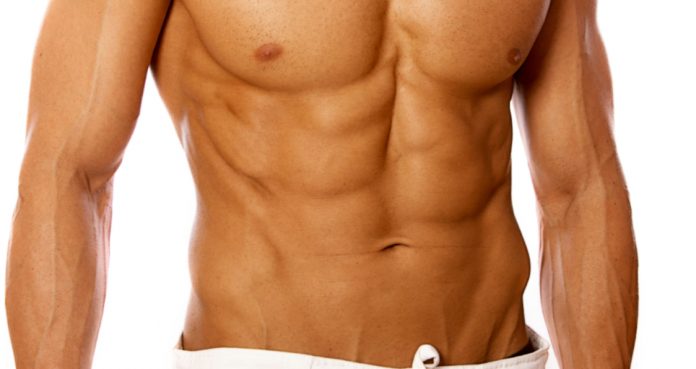
A Killer Circuit Workout To Smoke Your Abs
Build Your Dream Abs With This Circuit Workout
Abs are one of the most desired muscles and yet only a few possess them. A set of aesthetically appealing washboard abs are the result of proper training, diet, and recovery. You can’t build the abs of your dreams if one of the components is out of proportion.
Performing a circuit training workout can be more effective in developing the shape and conditioning of your abs as compared to the vanilla training routine of 3 sets of 10-12 reps. Try this ab workout the next time you train your abs and let us know how it goes.
You’ll be performing a total of three circuits where each circuit will have five exercises. After each exercise, you’ll rest for 30-seconds before performing the next exercise. After completing a circuit, you’ll rest for a minute before starting the second round.
Reverse Crunches – 20 Reps
In this circuit workout, you’ll be training your midriff from all the angles to ensure overall development. The reverse crunches work the middle and lower abs and are one of the most underutilized exercises when it to abdominal development.
Lie down with your back on a floor mat and your arms placed at your sides. Keep your feet flat on the floor by bending at your knees. Bring your quads to your chest by lifting your hips off the floor while maintaining the bend in your knees. Slowly return to the starting position and repeat for the recommended reps.
Russian Twists – 20 Reps (Each Side)
Obliques are one of the most overlooked muscles when it comes to abdominal training. The obliques are the fish gill-like muscles at the side of your abs. Twisting and turning movements are the ones which target the obliques most effectively.
If you feel the bodyweight version of the exercise is too easy for you, feel free to add resistance by holding a weight plate in front of your chest with your arms extended over your knees.
Cable Crunches – 20 Reps
While you don’t need to use added resistance in every ab exercise, using weights can help bring out the definition and separation in your midriff. Make sure you’re following a full range of motion while performing all the exercises mentioned in the article.
If you want to do this ab workout at home, you can perform the orthodox crunches instead of the cable version. Controlled breathing plays an important role in abdominal training. You should be breathing out and squeezing your abs at the contraction point and breathing in while returning to the starting position.
Leg Raises To Heels To Heaven – 20 Reps
Leg raises to heels to heaven bring the goodness of two exercises into one. Lie down on an exercise mat with your arms extended at your sides. Perform a leg raise by elevating your legs off the floor while keeping your legs straight.
As you form a 90-degree angle with your legs and the floor, raises your legs towards the roof by lifting your hips off the floor. Return to the starting position in the same manner with a slow and controlled movement.
Planks – 1 Minute
Most people make the mistake of overlooking their core strength when it comes to ab training. Core strengthening exercises will not only help you in shaping your abs but will also improve your performance in functional exercises.
Perform the orthodox planks in the first set and switch to doing the side planks in the next two circuits. If you give your all in this circuit workout, your abs will be on fire by the end of the first circuit and asking for mercy by the last.
Header image courtesy of Envato Elements
How often do you train your abs? Let us know in the comments below. Also, be sure to follow Generation Iron on Facebook, Twitter, and Instagram.
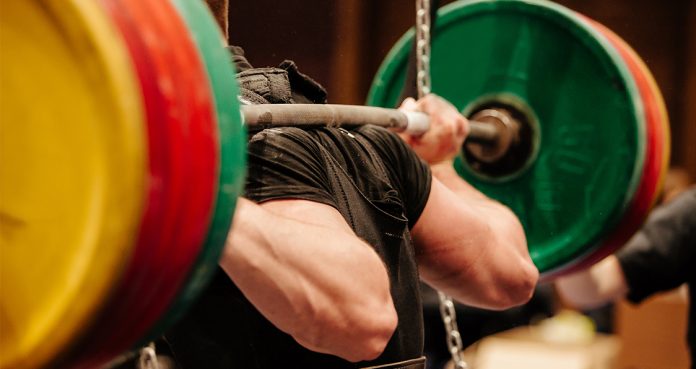
GUIDE: Become A Master Of The Squat
Why drink and drive when you can squat and fly?
The squat is one of the most natural and beautiful movements in bodybuilding. It’s also a standard position for bearing massive weight. The squat is an exercise we’ve all performed and think we’re doing right. After all there’s not much to it right? Wrong. Like all full body exercises, the squat is a movement that requires a perfect balance of many moving parts. Everything from breath to foot position should be considered before attempting this seemingly simple move. So do you want to master the squat or continue doing it half-assed like the rest of the lames at the gym? We thought so, read on.
Pre Squat
Before even attempting the squat there’s somethings you want to consider. Breathing correctly and having a straight but rigid spine will help give you stability to up your gains.
Breathing
We know it may seem monotonous and you do it without thinking anyway but being mindful of your breathing can effect not only your numbers but your life. You’d be surprise at how many times we clam up or stop breathing completely before a big task. Instead of breathing up and down try breathing in and out. Put your hand on your collar bone, if it goes up when you breath in then you’re doing it wrong. Try belly breathing, make sure your belly expands and contracts when you breathe out and in, you will physically see your rib cage going out and in when you’re doing it right.
Rigid Spine
Everyone knows you’re suppose to keep your spine straight but few people keep in mind to keep their torso rigid. This goes hand in hand with breathing, when you breathe out try and push out your obliques also. This should give you a flat stomach but visibly protruding obliques. Don’t overdo it now, it should feel fairly natural, the main thing is to make sure your center is firm and solid.
Other things to Consider
Things like lat engagement and clenching your cheeks (yes the bottom set) are also important before squatting. You can get lat engagement by simply pinching your shoulders back. The main thing to remember is that you are one solid unit, if a heavy weight was to fall on your shoulders from your standing position you should be able to bear it.
On The Bar
Now that you’ve been practicing your stance and your breathing let’s move onto the real deal stuff – the bar.
Unweighted bar
Get under the bar and get that good stance we spoke about earlier. This is where you want to work out all of your last minute kinks. So from top to bottom here’s how it goes.
Head neutral
Not to the floor, not to the sky. Find a spot where the floor meets the wall and hold your gaze.
Bend the bar
Actively pull into the bar with your two hands, this will help your posture and keep the bar tight to your body. You want your hands to be just wide enough to hold the securely behind, too lose and you won’t engage your lats.
Root your feet
You want to engage your feet but not the way you’re probably thinking. As opposed to just applying downward pressure try twisting your feet into the ground. The conscious effort to to pull your heels in will not only apply downward pressure but will pull your knees into optimal position.
At this point there’s nothing to it but to do it, or rather, the point where you’ve got to lift some heavy ass weights. We suggest you take your time and go through each of the stages we spoke about before. You’re breathing, your stance, and your on the bar last minute checklist. You’re going to notice that you’re still making some of the same mistakes but don’t be too hard on yourself, in time you will break those bad habits. We recommend you lift with a friend to make sure you’re doing all your reps correct to form. Start off small until your position becomes automatic and then start the youtube videos..
And hey – once you’ve mastered this or if you’re already a master check out the variations below to add something new to your routine.
Jump Squat
Cross your arms over your chest.
With your head up and your back straight, position your feet at shoulder width.
Keeping your back straight and chest up, squat down as you inhale until your upper thighs are parallel, or lower, to the floor.
Now pressing mainly with the ball of your feet, jump straight up in the air as high as possible, using the thighs like springs. Exhale during this portion of the movement.
When you touch the floor again, immediately squat down and jump again.
Repeat for the recommended amount of repetitions.
Kettlebell Pistol Squat
Pick up a kettlebell with two hands and hold it by the horns. Hold one leg off of the floor and squat down on the other.
Squat down by flexing the knee and sitting back with the hips, holding the kettlebell up in front of you.
Hold the bottom position for a second and then reverse the motion, driving through the heel and keeping your head and chest up.
Lower yourself again and repeat.
That about wraps it up. Follow through the guide above and you’ll be a master of the squat in no time. Make sure to hit us up in the comments with any other tips that you think makes you a master of the squat. Stay pumped.

How This Ryan Terry Workout Can Greatly Improve Your Physique
This workout from Ryan Terry will provide for those desired gains you want most and a physique others will envy.
Ryan Terry is a bodybuilder and model with an absolutely shredded physique. As a result of hard work and sheer determination to be the best, matched by a competitive side that fuels this work ethic, he has stood next to some of the greats and his passion is undeniably inspiring.
Too often do we seek to find the best workout around. It can be challenging to know which workouts are right for us, and with so many exercises and influencers claiming to have the secret weapon, knowing who to trust and listen to can only add to that challenge. Taking advice from pro bodybuilders and those athletes we look up to can be great, for they’ve done it all before and are living proof of what can happen when you put your mind to it.
Ryan Terry has proved he can stand tall against the best and with his work ethic as one to most certainly envy, he holds clout in the workout world for the way he carries himself and the way he stays true to the work to see results.
Full Name: Ryan Terry
Weight
Height
Date Of Birth
185-195 lbs.
5’10’’
11/17/1988
Profession
Era
Nationality
Bodybuilder, Model
2010
British
Ryan Terry has appeared in a number of commercials and fitness magazines, showing off his absolutely shredded physique. He became Mr. International and Mr. Great Britain in 2010 and took the jump into bodybuilding becoming the first ever to win Men’s Physique at the UKBFF championships from the United Kingdom. He has only continued his success and is one to pay attention to as he is most definitely fun to watch.
About Ryan Terry
At a young age, Ryan began going to the gym and as the years went on, began to see great progress. Eventually, he would decide to compete in bodybuilding contests and realized he’d found a passion. What started as a way to build confidence became a career and lifelong pursuit for greatness. He would soon start winning competitions and began standing amongst some of the best in the world. Simultaneously, calls started to come in for him to model for them, and his career as a fitness model would soon take off as well. He realized fairly quickly that this would be lucrative and fulfilling and has dedicated his life to his pursuit of building the best physique that he can.
Ryan Terry Training Routine
This workout routine from Ryan is a great balance of volume and intensity. By working your muscles differently, you force them to react to different amounts of stimulation to see the growth you want most. For Ryan, it’s about the entire process of the workout, not just the end result, and knowing that these changes take time can help your mindset especially when this workout starts to get a bit grueling. This workout is one to certainly help with your own gains as you seek only the best for yourself and your physique.
Day 1: Back
Exercises
Sets
Reps
Pull Ups
3
10
Wide Grip Pulldowns
3
10
Close Grip Seated Rows
3
12
Lat Pulldowns
3
12
Bent Over Rows with Barbell
3
8
Deadlifts
3
8
Day 2: Shoulders & Abs
Exercises
Sets
Reps
Lateral Raise
3
12
Overhead Press
3
10
Front Raises
3
12
Rear Delts on Cables
3
10
Shrugs
3
15
Rear Shrugs
3
10
Sit Ups
3
20
Side Oblique Twists
3
20
Weighted Crunches
3
20
Day 3: Legs
Exercises
Sets
Reps
Back Squats
3
8
Hack Squats
3
8
Leg Press
3
10
Leg Extensions
3
10
Lunges
3
12
Seated Calf Raises
3
12
Single-Leg Calf Raises
3
12
Day 4: Chest & Abs
Exercises
Sets
Reps
Incline Barbell Press
3
10
Dumbbell Press
3
10
Cable Flys
3
12
Incline Flys
3
12
Hanging Leg Raises
3
15
Crunches
3
15
Bicycles
3
15
Day 5: Arms
Exercises
Sets
Reps
Triceps Dips
3
15
Single Arm Pushdowns
3
10
EZ Bar Curls
3
12
Alternating Dumbbell Curls
3
12
Hammer Curls
3
10
Skullcrushers
3
10
Featured Supplement
When it comes to building up a nice physique, it is important to have a solid supplementation routine behind you to assist with any and all of your goals. Whether that be a protein supplement to assist with growth and recovery post-workout, or a BCAA to help you push past fatigue and aid in recovery for those intra-workout needs, these products can only enhance what you want to see most out of your training and performance. For those struggling to lose that stubborn belly fat, a fat burner can definitely be a great choice to boost metabolism and increase energy.
But what about those pre-workout needs? A good pre-workout supplement is exactly what you need to see great gains and Kaged Muscle has a great product for you.
Kaged Muscle Pre-Kaged
Use code GENIRON1O for 10% off!
Kaged Muscle Pre-Kaged is great for those looking to increase performance and intensity with a high-quality pre-workout. Great ingredients and a quality blend make this unstoppable for your pre-workouts needs.
Increase the performance and intensity of your workout with this high quality pre-workout powder available from Kaged Muscle. Kaged Muscle Pre-Kaged is unmatched in terms of ingredient quality and synthesis of the blend of proteins. Kaged Muscle lab tests every batch to make sure each is fully loaded as advertised — 274 mg pure caffeine, 2 g taurine, 6.5 g fermented BCAAs, 6.5 g pure l-citrulline, and 2 g of their patented betapower blend. It’s an unbeatable combination that is guaranteed to supercharge any workout with great pre-workout ingredients from supplements to increase muscle and promote weight loss.
Price: $39.99
Use code GENIRON10 to save 10%! Check out our individual review for Kaged Muscle Pre-Kaged here!
Check out our list of the Best Pre-Workout Supplements for more great products!
Wrap Up
This workout from Ryan Terry is one to fire up your muscles so they grow to allow for your physique to start to take shape. With great exercises and a solid plan, those body composition goals are closer than you think and can be game changers for your entire routine. With the right supplements behind you, your body will thank you for giving it great nutrients to thrive at a high level while still working wonders for all your gains. Give this workout from Ryan Terry a try and see what it can do for those desired physique goals.
Let us know what you think in the comments below. Also, be sure to follow Generation Iron on Facebook, Twitter, and Instagram.
*Images courtesy of Ryan Terry
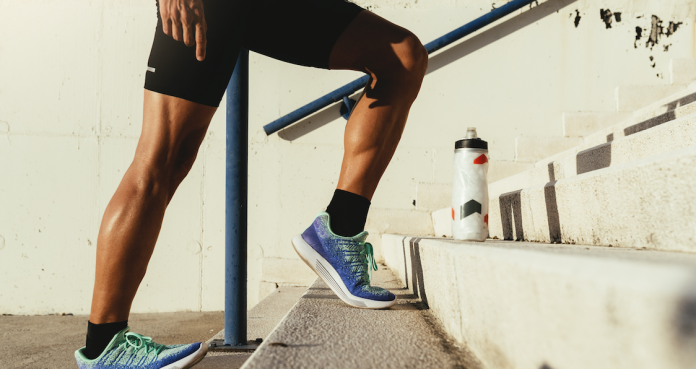
Check Out This Intense Lower Body Workout for Ripped Calves and Hams
Leg day. There. I said it.
Leg day can be one of the most challenging and often neglected aspects of being a bodybuilder. It’s confusing, it’s hard, and — let’s be honest — it wants what chest day has. Have you been training your legs for a long time but feel like your progress has stalled? Check out the intermediate lower body workout below for an excellent way to train your calves and hamstrings.
Please remember that this is an intermediate level workout intended for those who already have at least 1 – 2 years of serious strength training. We have a wide variety of leg workouts available here at Generation Iron to accommodate those who are just looking to get started.
How long should I be practicing this workout?
You can adjust the program to your level of comfort. Ideally, it should be performed for 8 weeks. However, if you’re stretched a little thin right now and don’t have that much time to get in a workout, you can modify it to be shorter and last for 6 weeks — though don’t expect incredible, long-lasting muscle to be built in that time.
Or, if you’re in a headspace where you’re really trying to motivate yourself, you can go harder and do it for 12 weeks. The most important thing is to make it work with however you’re currently working out, otherwise you won’t actually do it.
How often should I do it during the week?
You should cycle through lower body and upper body splits throughout the week however you feel most comfortable. Assuming you workout most or every day, you should consider doing this lower body workout two to four days every week, depending on how much you’re working out the other parts of your body.
Just try and match however much work you’re putting into your hams/quads with what you’re doing for your upper body and you’ll be fine. Also, make sure to take rest days in between those days so your muscles have a chance to heal.
Intermediate Leg Workout for Ripped Calves and Hams
Seated Leg Curl — 5 sets of 5 – 10 reps
Start off with a seated leg curl. Many of the muscle groups in the leg respond well to high intensity training rather than high endurance training, so it’s good to start strong and hit it hard.
Stiff Leg Deadlift — 5 sets of 5 – 10 reps
The stiff leg deadlift is an excellent modulation of the standard deadlift that really helps you feel the burn through the back of the leg and develop resistance in those muscles.
Standing Calf Raise — 5 sets of 8 – 12 reps
Moving into the calf portion of the workout, this is a great way to warm up that area of the body and build muscle.
Leg Press Calf Raise — 5 sets of 8 – 12 reps
A little bit more challenging than the standing calf raise, this helps build muscle in these groups by gradually increasing the intensity.
Donkey Calf Raise — 5 sets of 5 – 10 reps
This really encourages muscle growth in the lower leg and can be challenging at this point, so feel free to reduce the amount of sets/reps in this group to your comfort level.
Seated Calf Raise — 5 sets of 8 – 12 reps
Moving into the cool down period of the workout, this calf raise shouldn’t be skipped, since it builds the foundation for workouts to come.
